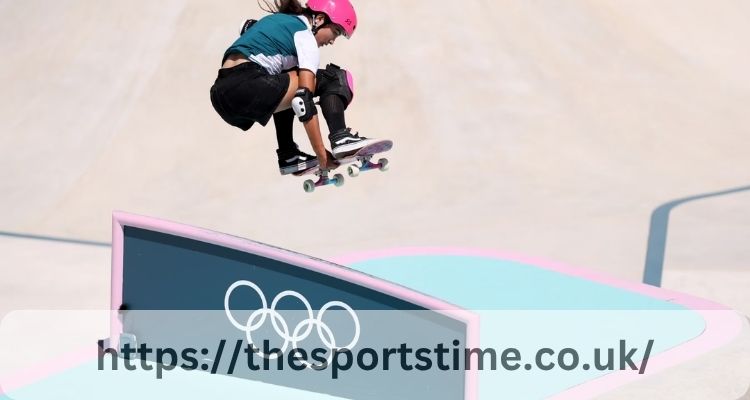Essential Tips for Skateboarding Olympics Success

Skateboarding made its Olympic debut at Tokyo 2020 with men and women competing in park and street events. Both involve skating on a straight course that includes elements such as stairs, handrails and slopes.
Teenagers have been the stars of skateboarding at these Olympic Games so far, with Momiji Nishiya and Rayssa Leal both 13 years old winning gold medals in skateboarding at these Olympics. Skateboarding’s freedom-seeking nature makes it attractive to kids and adolescents, who often find the event fun to attend.
Street
The Olympics have long been known for showcasing athletes who exhibit remarkable feats of athleticism and skill, such as skateboarding. Skateboarding made its Olympic debut at Tokyo 2020 and won over viewers everywhere with incredible tricks performed by athletes – yet Skateboarding Olympics itself is an unconventional activity with deep historical roots as a countercultural activity.
Today, many skaters view competition as just one component of the experience. They enjoy skateboarding in public spaces that have been customized for skateboarding and participating in community-oriented events that promote it, such as supporting local skate shops or organizing fundraisers to raise money for charities. Furthermore, many work with various organizations advocating on behalf of skaters’ rights and interests.
Skateboarders are an eclectic bunch, each possessing their own interests and abilities. Some specialize in competitive street or park skating while others hone their artistic or performance goals. As the sport has rapidly gained traction across America, especially among teenagers, skateboarding has become an immensely popular pastime that many teenagers enjoy as an activity that will only continue growing with time.
Skateboarding was once seen as a dangerous and illegal activity; however, in recent decades it has gained acceptance and become more mainstream. Skateboarding Olympics is now recognized as an innovative form of expression; many skaters use their abilities to produce movies, fashion clothing lines, or art exhibits.
The Olympic Games provide a wonderful platform to highlight skateboarding culture and its diverse participants. Both the men’s and women’s skateboarding events at these Games consist of street and park competitions; each of these has different scoring systems and allows skaters to perform different kinds of tricks.
Street competitions include an obstacle-filled course designed to replicate obstacles skaters would encounter in an urban environment, including stairs and rails. Athletes must complete two 45-second runs with five best trick attempts per run in order to advance to the finals.
Park
Skateboarding’s inclusion as an Olympic sport has seen several skaters find prominence, particularly those skating park skateboarding. This style uses an ever-evolving course with bowls and bends designed to help athletes gain height while performing mid-air tricks. Park competition requires skaters to link a sequence of coping and aerial tricks during a 45 second run; those scoring the highest are awarded medals.
At the 2024 Paris Olympics, two park Skateboarding Olympics events will take place; men’s and women’s. Skaters must complete three 45-second runs during preliminary rounds; their best run will determine their ranking; after which, only eight skaters will advance to final. Each winner of each event will be honored with a gold medal award.
Park skateboarding has developed from its predecessor discipline of street skating that first made an Olympic appearance at Tokyo 2020. While street skaters perform jumps and grinds on ledges, stairs, and handrails, park skaters perform various tricks on an urban environment-inspired combination course with bowls, pools, ramps, course bends and course bends that help increase speed while performing tricks.
At park skateboarding Olympic events, skaters are judged based on the complexity and consistency of their tricks, their overall run’s flow, whether or not maximum speeds were reached and whether or not maximum scores have been attained. Skateboarders may earn up to 100 points for their performance.
Judges use several criteria when it comes to judging park skateboarding, with high-scoring runs typically consisting of multiple tricks from spinning and flipping in the air to grinding on rails and copings. They also consider height gained on each jump – the higher your jump is, the more points a skater receives for it; so skaters tend to focus on performing high-scoring tricks that require lots of energy in order to maximize points gained – often these tricks prove more difficult to complete!
Freestyle
Skateboarders are judged mainly on the difficulty and consistency of their tricks and routine. Tricks may also be scored differently depending on their speed of performance – some require momentum, while others necessitate changing weight balance on the board; skaters may use flips, slides and jumps as part of a single trick routine.
Skateboarding made its Olympic debut at the 2020 Games in Tokyo. Many in the skating community were delighted that skateboarding made its Olympic debut. Many feel this will legitimize skateboarding and bring more worldwide awareness of it; plus it showcases skaters’ athletic prowess while simultaneously highlighting female participation in an otherwise male-dominated sport.
Freestyle skateboarding is a form of skateboarding in which riders perform tricks while moving their feet and body like dancing. Although a physically demanding sport, freestyle skating provides an exciting outlet to express creativity and freedom through spins, flips, slide techniques for overrails and ledges, etc. This form of skating first began as the California Amateur Skateboard League (C.A.S.L), founded by Frank Hawk and two other skateboarding legends as the California Amateur Skateboard League (C.A.S.L).
A Saran Wrap is an ollie variation in which a skater uses their front foot to trace a circle around the nose of their board without touching it with his or her toe. It requires great power and control and should always be performed from either a regular pogo or 50/50 platform; sometimes it can even be popped for additional spin. Sometimes a Saran Wrap forms part of larger stunts involving stacking multiple boards.
Steep tails can be an immense source of frustration for freestyle skaters. They make caspers more awkward by making it more difficult to keep your back foot on the tail, they cause shuvits to be unstable and uncoordinated, and they amplify small movements and weight changes into bigger motions.
At the Olympic Park and Street Skating events, skaters must contend with steep tails on their boards – adding extra challenge. A Brazilian sweep may occur as three of its best skaters – Leticia Bufoni, Pamela Rosa and Rayssa Leal – may take part.
Tricks
Skateboarders employ momentum and footwork to perform impressive tricks on their boards. Tricks can be performed anywhere from streets and parks to vert skateboarding (skateboarding on a ramp). Skateboarders may also make jumps off ledges, benches or structures and require special tricks in order to land. Some of the world’s most renowned skateboarders have become legendary thanks to performing daredevil jumps or performing other innovative acts on their boards that have helped build its rich history.
Tricks are at the foundation of skateboarding and an essential part of becoming a better skateboarder. From riding two wheels only (known as “wheelie”) to complex aerial flips, tricks help skaters reach new levels of skill and performance on their boards.
One of the most essential tricks is learning to ride switch, or skating on one foot with an opposite footing. This can be accomplished by shifting weight from your dominant side onto its opposite footing and then switching them back again if necessary. Once mastered, this skill enables faster skating speeds and higher jumps; once this mastery has been attained you can move onto more complex tricks.
As skateboarding progressed, more sophisticated tricks were invented and the sport became separated into two disciplines – street skating and park skating. Skateboarders developed three-dimensional freestyle maneuvers such as jumping over obstacles and landing on their back wheel for what is known as “manuals,” taking advantage of terrain features like inclines, curves and other elements found at skateparks.
In the early 1990s, skateboard legend Rodney Mullen created an elaborate series of tricks, leading to an explosion in street skating popularity. Skateboarding became a recreational activity widely enjoyed among both teenagers and children who enjoyed both its social aspects as well as performing difficult skateboard stunts with friends.
In 2020, the Olympics added skateboarding as a competition, featuring men’s and women’s events for both genders. Japan’s Yuto Horigome was victorious in his event; Australia’s Keegan Palmer triumphed in hers. Furthermore, US star Nyjah Huston unexpectedly finished seventh overall.


